
Make Virtual Class Real: Tips from 2 No-Tech Teachers
By Jack Rodgers and Elizabeth Elder
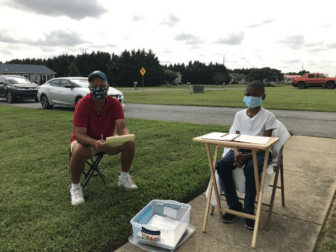 This school year has educators facing unprecedented challenges. Teachers realize that settling for virtual, at-home learning is a Faustian bargain. Contrary to the marketing claims offered by entrepreneurs, venture capitalists, “philanthropists,” and others seeking to profit from packaged educational solutions, there is little to no research that contests what we know to be true: there’s no substitute for in-person, interpersonal instruction.
This school year has educators facing unprecedented challenges. Teachers realize that settling for virtual, at-home learning is a Faustian bargain. Contrary to the marketing claims offered by entrepreneurs, venture capitalists, “philanthropists,” and others seeking to profit from packaged educational solutions, there is little to no research that contests what we know to be true: there’s no substitute for in-person, interpersonal instruction.
So, what’s a teacher to do? Here are some of the techniques and strategies used at our no-tech school last spring (ours is a self-contained Life Skills classroom for sixth, seventh, and eighth grade students with a wide range of IEPs ranging from Autism to LD to OHI, Mild to Moderate Intellectual Disability, and Emotional Disturbance):
Family buy-in.
When “At Home” learning was mandated last March, our class was fortunate in that we already had an entirely interpersonal educational experience for our children and families. We’d held Family Nights and celebrations where the kids showcase their culinary and educational skills and offered presentations to the families on why our curriculum is set up without computers and Edtech. So, when the switch came to “at home” teaching last spring, our families were already “on board” with the no-computer strategy. 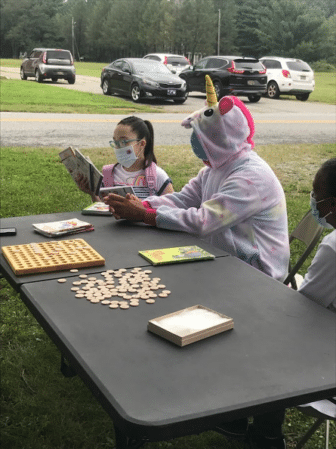
You probably can’t have Family Nights (right now), but you can explain the “whys and wherefores” of what we know works best. Parents will respond — particularly now.
Mask up and knock on that principal’s door (or pick up a phone).
Enlist the support of your administrators. We have been very fortunate to have buy-in from the top to help us promote our life skills approach to education. Our kids are in the paper for community events, and parents and children are happy. That helps, too.
Finally, consider each child’s IEP goals.
Figure out just what is achievable in a remote environment. Again, it’s crucial to work with parents on this.
And now, the fun stuff.
Activities!
Handwritten letters.
This was, hands-down, the most popular activity we ran. We use handwriting in class because it requires effort, compared to a hurried text or a dashed off email. Handwritten letters involve thinking and choices, from the type and color of the paper to the envelope to the very stamps themselves. They also personalize what you write and tell the reader about you. They are reassuring, personal connections that add normalcy during a time that is frightening. Parents reported that kids who never even knew they had a mailbox would now go and get the mail each day, looking for a letter.
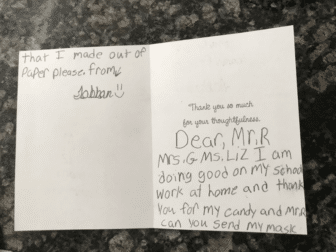 Now, our kids are sending letters to school boards, other teachers, and government officials. Some recipients were good enough to respond. It’s pretty heady stuff for a kid who’d never had much success in intrapersonal education to get a letter back from a member of the Delaware House of Representatives!
Now, our kids are sending letters to school boards, other teachers, and government officials. Some recipients were good enough to respond. It’s pretty heady stuff for a kid who’d never had much success in intrapersonal education to get a letter back from a member of the Delaware House of Representatives!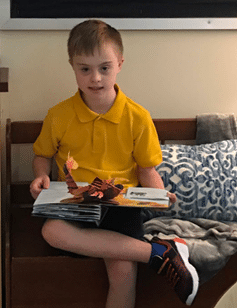
Keep ELA simple.
We continued with our in-school reading program of having each child read for thirty minutes — something they choose themselves and can read successfully. They then discuss it with a caregiver or sibling, then write with paper and pencil for twenty.
The idea behind that is that if they read it successfully and picked it themselves, they’ll be motivated to read more. One day a parent of one of our students with Down Syndrome called: his child was reading a book he had picked out. The father was ecstatic!
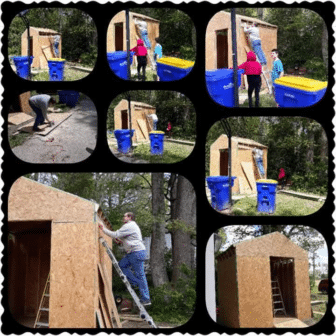 Encourage Life Skills.
Encourage Life Skills.
Making time for Life Skills leads to all sorts of experiences: creating and following recipes, construction projects (we send the materials, as many of our families are struggling economically), etc. We started to receive pictures of kids helping to build sheds and raking, holding up rocks or plants they’d found. We even got pictures of one of our students working on a tractor, clearing brush. This from a child who, two years prior, was afraid to enter our room. We got notes from parents who said that while they were at first apprehensive, they now cherish the time their kids were home. And when some businesses reopened and they had to go back to work, they felt as torn as they did when maternity leave ended. 
Routine.
Students thrive on structure, so we helped coach parents on setting a routine. Several students created routines mirroring what they had been doing at school, though several gave themselves Fridays off! Our autistic students and their families in particular liked having a structured routine.
Celebrate.
Send pictures and birthday cakes and awards. Call and sing happy birthday. Small things can weave a tapestry of togetherness.
Teachers, try these strategies with your students. Parents, share them with your teachers. There are many easy and creative ways to make virtual class real.

About the Authors
Jack Rodgers MSW and Elizabeth Elder MSEd are educators at Milford Central Academy in Milford, Delaware, where they teach Life Skills classes.
